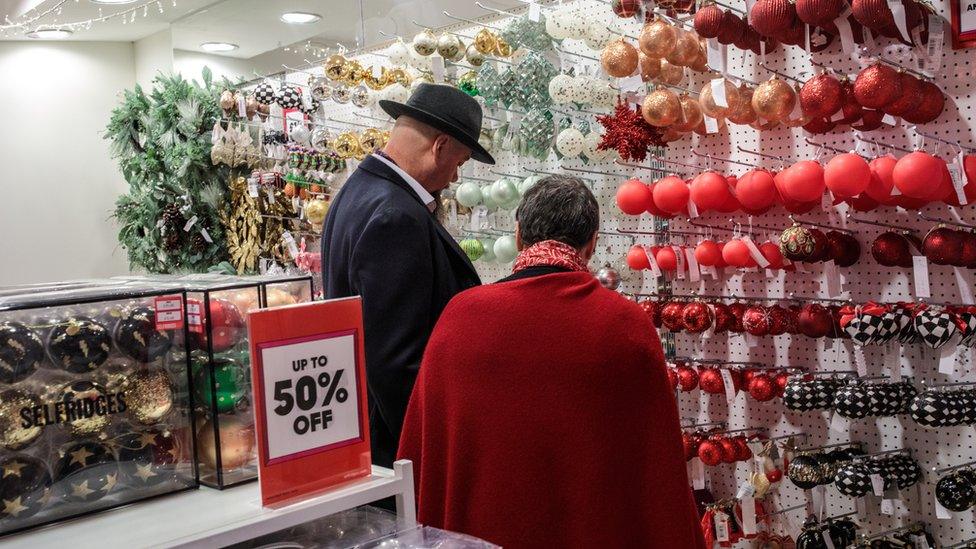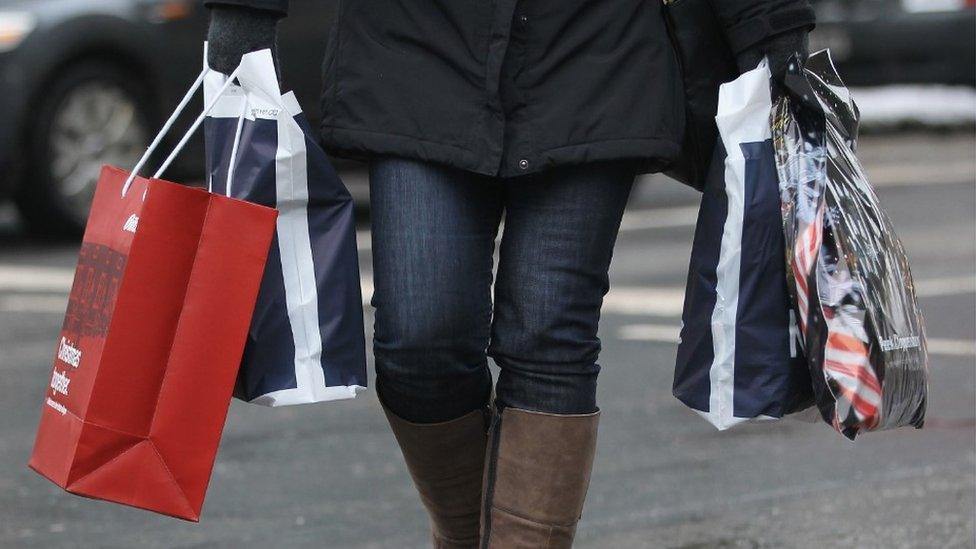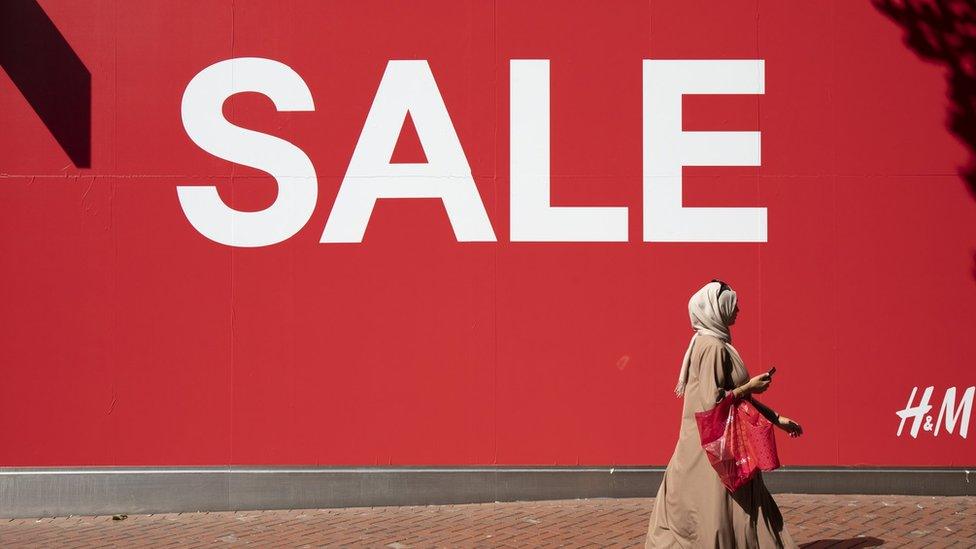When is a sale actually a sale?
- Published
- comments

First it was the High Street, now it's online as well: retailers are desperate to attract consumers by offering huge discounts.
There's talk of clothing firms slashing prices to jumble-sale levels in a bid to shift their stock.
The perception is that some companies have entered permanent sale mode, with constant special offers instead of hawking their goods at full-price.
But is there any truth in that? And when is a sale actually a sale?
Well, the rules on what is and isn't allowed are arguably not as clear as they could be.
There is a code of practice produced by the Chartered Trading Standards Institute (CTSI), which advises retailers on how they should act.
Among its recommendations are:
Statements such as "20% off all online orders" or "everything 10% off" must not be used unless such claims apply to all products on offer
Firms need to be able to show how long and how recently a product was on sale at full price before being discounted
Offers such as multi-buys must genuinely provide the consumer with better value
However, as the CTSI has explicitly said, "Only a court can decide whether a business has broken the law and the guidance is not intended as a set of rules."
The law, as contained in the Consumer Protection from Unfair Trading Regulations, simply says that if products are on sale or special offer, retailers have to show the original price and must have been selling at that price for "a meaningful period of time".
They should also not claim a discount against the recommended retail price if it is "significantly higher than the price generally charged for the product".
So how does that work in practice?
Pricing specialist James Brown, a partner at consulting firm Simon-Kucher, says that despite efforts by trading standards bodies to enforce rules on sales, companies are very canny at promoting bargains.
"You can always have something on sale to send out promotional emails and attract attention to your site," he says.
"You're talking about millions of price points on hundreds and hundreds of items. It's incredibly hard to track the prices over time - you're relying on the record-keeping of the retailers."
According to Mr Brown, clothing retailers in particular have become accustomed to setting prices at the start of the season with a margin for discounting built in.
The problem sets in when they have to discount by more than they expected: "Suddenly the numbers don't add up any more."
And in the current climate, prices always go down, never up.
"Retailers are not so good at pushing the price up when they've got a really hot product on their hands," he says.
The effect, as he says, is that customers no longer know what products are actually worth. They may suspect that the original price tag was inflated all along, but they enjoy the idea that they're getting a good deal on a discounted product.
"People are guided by what they see on a sticker," he says. "They love being able to say, 'I've got a bargain.' They're happy to fool themselves."

Are some retail sectors more sales-mad than others?
Clothing retailers are grabbing all the headlines at present, but Simon-Kucher's Mr Brown says the discount mentality is "endemic to all sectors of retail".
"The grocery market had a long period of price war," he says.
"We've just got back to the same price levels that we had at the end of 2014. We're the most promotion-driven country in Europe in groceries."
Of course, some firms use pricing as a tactic for building market share. Amazon was prepared to sustain years of losses in order to build up a dominant position as an online retailer.
However, it also offers convenience and range of stock - which is just as well from its point of view, since price is no longer a viable unique selling point.
"The High Street has retaliated hard against cheaper online products," says Mr Brown. "If you're fighting just on price, then you end up in a downward spiral."

So what happens next?
The current wave of retail discounting is serious, but "this is not an unprecedented situation", says Andy Mulcahy, strategy and insight director at online retail association IMRG.
Similar price-cutting happened in the run-up to Christmas in 2011 and 2015, he says, but retailers recovered without lasting problems.
"The problem is that you get stuck in it, it's very difficult to get out of it," he adds.
"Because they had done such heavy discounting, they struggled to turn that off, because as soon as you do, sales fall off a cliff."
On those two previous occasions, firms started to reverse the discounts after the January sales, when fewer goods are sold anyway, so that by the second quarter, they were back to normal.
"I suspect the same thing will happen this year, but you do have this massive uncertainty of Brexit," Mr Mulcahy says. "All possibilities are still on the table there."
However, he remains confident that despite low levels of consumer confidence, shoppers will still turn out before Christmas.
"No-one is going to wake up on Christmas morning and say to their family, 'I didn't get you anything because of Brexit,'" he says. "That's just not a possibility."
- Published16 December 2018

- Published13 December 2018
